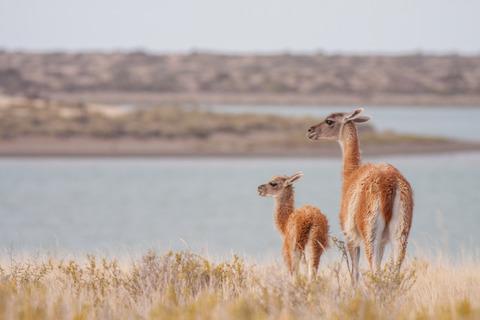当前位置:
X-MOL 学术
›
J. Appl. Ecol.
›
论文详情
Our official English website, www.x-mol.net, welcomes your
feedback! (Note: you will need to create a separate account there.)
Wild guanacos as scapegoat for continued overgrazing by livestock across southern Patagonia
Journal of Applied Ecology ( IF 5.0 ) Pub Date : 2020-09-20 , DOI: 10.1111/1365-2664.13536 Andrea Marino 1 , Victoria Rodríguez 1 , Natalia M. Schroeder 2
中文翻译:

野生山羊驼作为替罪羊,使整个巴塔哥尼亚南部的牲畜不断放牧
更新日期:2020-09-20
Journal of Applied Ecology ( IF 5.0 ) Pub Date : 2020-09-20 , DOI: 10.1111/1365-2664.13536 Andrea Marino 1 , Victoria Rodríguez 1 , Natalia M. Schroeder 2
Affiliation

|
- In a recently published paper, Oliva et al. concluded that domestic grazing pressure across Patagonian rangelands approached carrying capacity due to decades of stock adjustment, but that guanaco overpopulation may have altered that balance. The authors argued that unless guanaco numbers are controlled, they will reduce forage available for domestic stock and will negatively affect rangelands. We consider that the herbivore‐stock analysis presented is inaccurate and deserves revision, and that the stated conclusions lack empirical support.
- When the spatial distribution of herbivores is accounted for in the Oliva et al. analysis, domestic stock is far above carrying capacity, indicating that domestic overgrazing continues.
- Theoretical and empirical evidence on bottom‐up regulation and competitive exclusion challenges the supposed guanaco overpopulation and the hypothetical reduction of forage available for livestock.
- Even if guanaco numbers are reduced, grassland degradation and production losses will continue because their main drivers, domestic overstock and heterogeneous grazing, are still operating.
- Synthesis and applications. Oversimplified models with poor ecological insight can lead to erroneous conclusions and misguide management decisions. The incorrect inference that Patagonian domestic stock is adjusted to carrying capacity could help to consolidate current domestic overgrazing by reducing incentives to improve livestock management practices. Regarding guanacos, a controversial species in an unfavourable context, control‐oriented harvest without a clear justification threatens populations’ viability and genuine attempts of productive diversification. Addressing relevant ecological processes, such as niche partitioning, competitive exclusion and population regulation, is essential to correctly assess joint carrying capacity in multi‐herbivore systems, as well as to identify the true factors driving degradation processes and to optimize rangeland use on a sustainable basis.
中文翻译:

野生山羊驼作为替罪羊,使整个巴塔哥尼亚南部的牲畜不断放牧
- 在最近发表的论文中,Oliva等人。得出的结论是,由于数十年的种群调整,整个巴塔哥尼亚牧场的国内放牧压力已接近承载能力,但骆驼种群过多可能改变了这一平衡。作者认为,除非控制了骆驼科的数量,否则它们将减少可用于国内库存的草料,并对牧场产生不利影响。我们认为,提出的草食动物种群分析是不准确的,值得修订,而且上述结论缺乏经验支持。
- 当草食动物的空间分布在Oliva等人中得到解释时。分析认为,国内库存远远超过了承载能力,表明国内过度放牧仍在继续。
- 自下而上的监管和竞争性排斥的理论和经验证据挑战了假设的骆驼种群过多和假设可用于牲畜的饲料减少。
- 即使减少了原驼的数量,草地退化和生产损失仍将继续,因为它们的主要驱动力,国内积压和异种放牧仍在继续。
- 综合与应用。缺乏生态洞察力的过度简化的模型可能导致错误的结论并误导管理决策。对巴塔哥尼亚国内存量进行调整以适应承载能力的错误推论,可能会通过减少改善牲畜管理措施的激励措施来帮助巩固当前的国内过度放牧。关于在不利条件下有争议的物种美洲驼,没有明确理由的以控制为导向的收成威胁着人口的生存能力和生产多样化的真正尝试。解决相关生态过程,例如生态位划分,竞争性排斥和人口调节,对于正确评估多草食动物系统的联合承载能力至关重要,











































 京公网安备 11010802027423号
京公网安备 11010802027423号